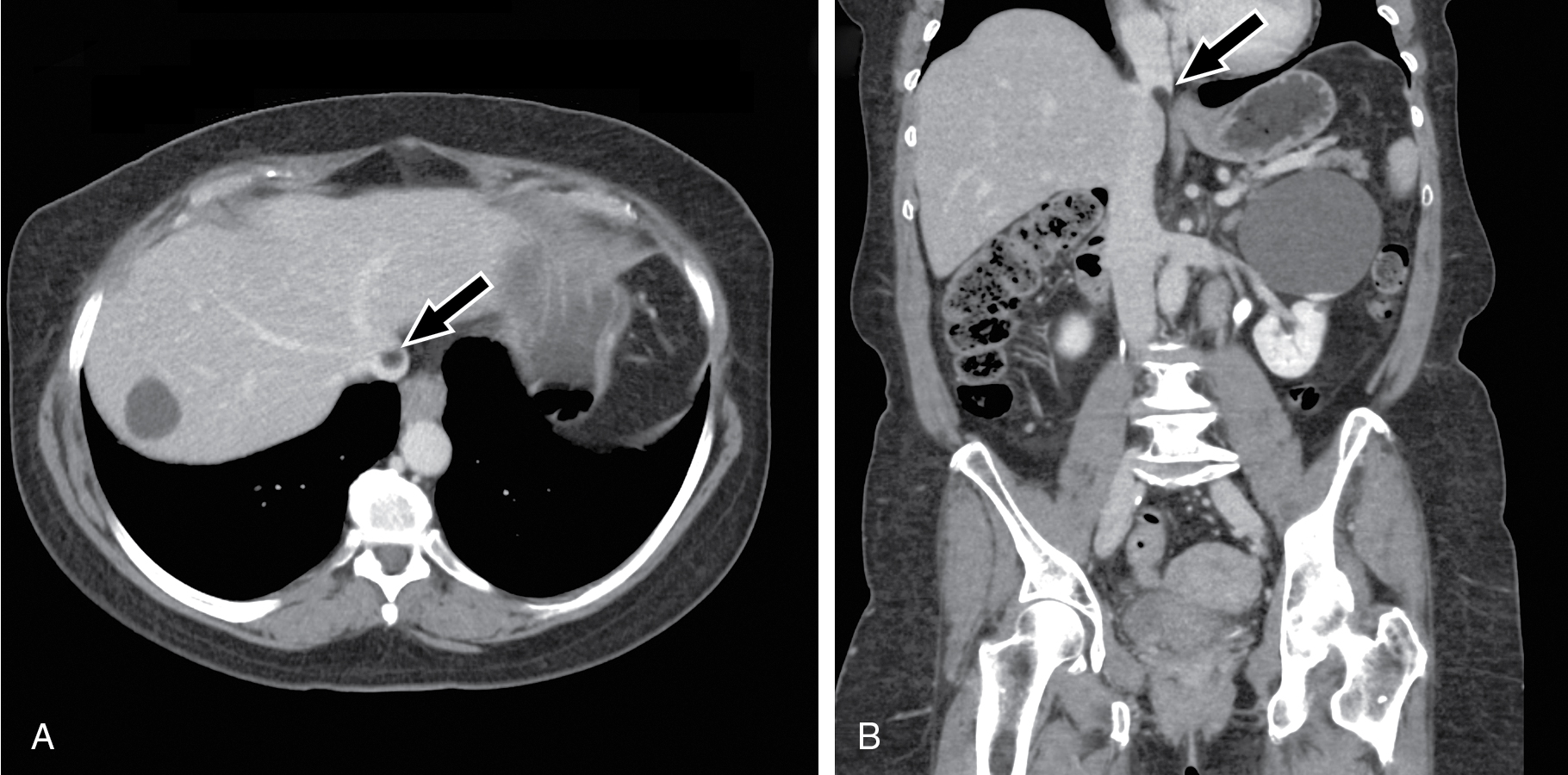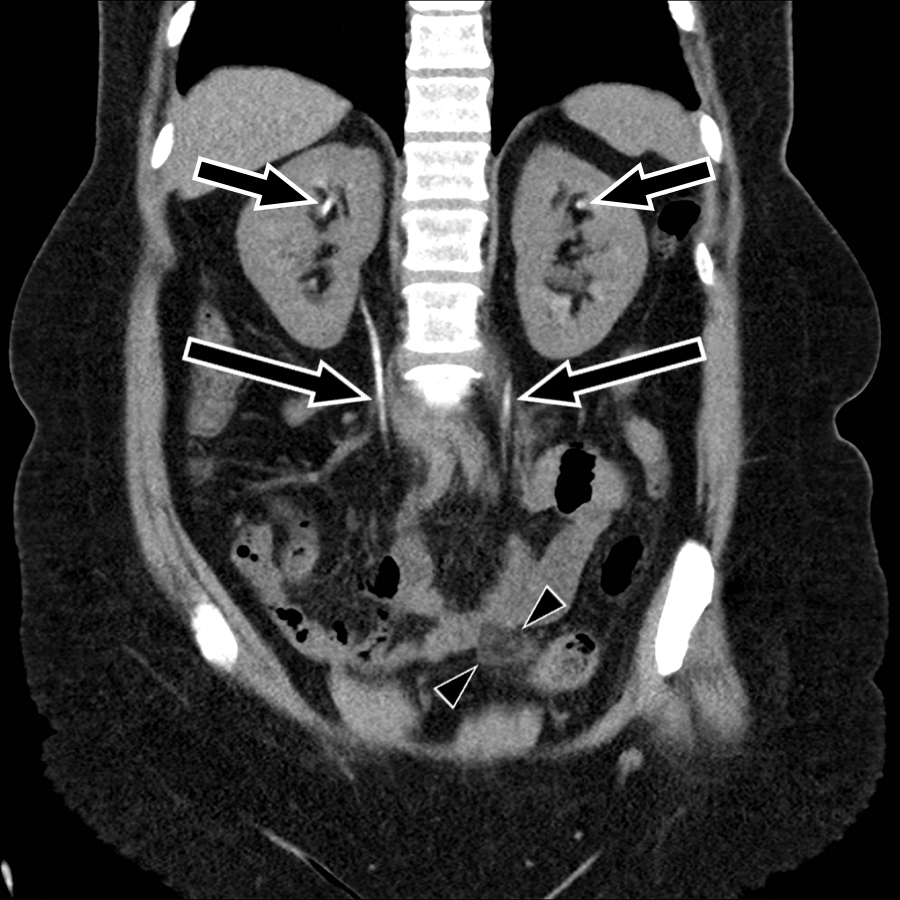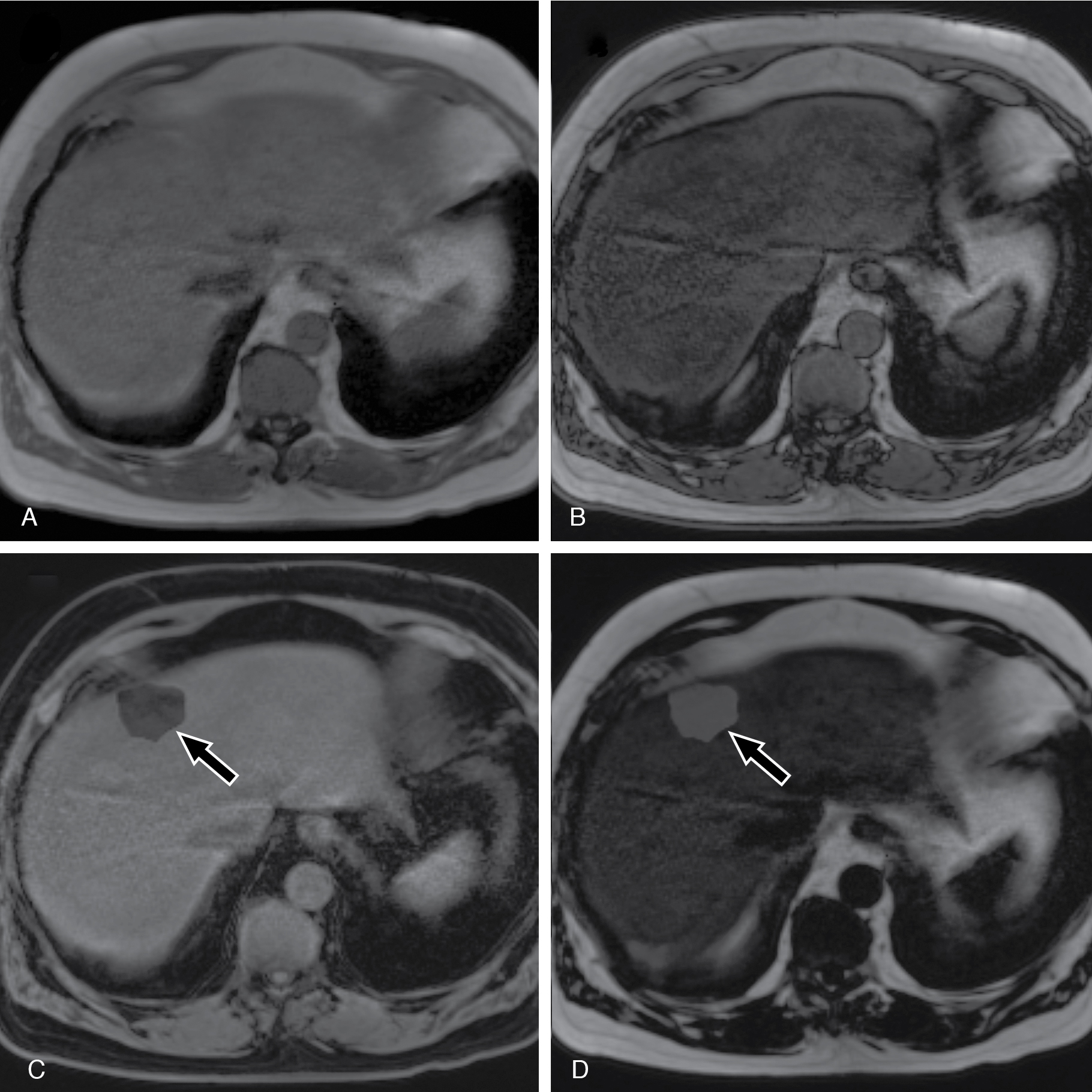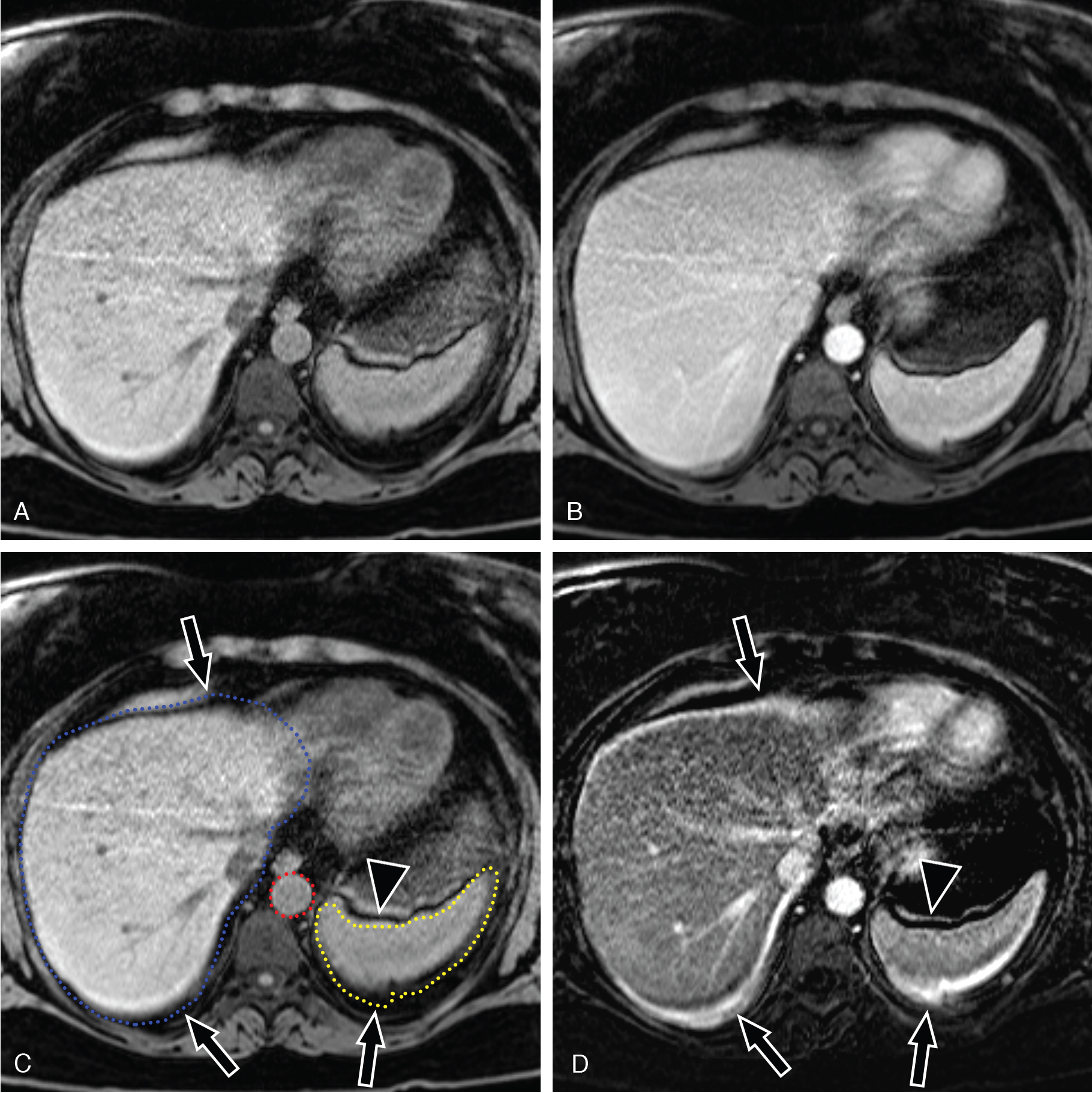Physical Address
304 North Cardinal St.
Dorchester Center, MA 02124
Accessory spleen: very common. Typically near spleen. Can be intrapancreatic. Can be mistaken for a mass. Should look like spleen on all imaging sequences.
Duplicated renal collecting system: prone to obstruct/reflux. Has surgical implications.
Prominent column of Bertin: mimics focal renal mass. Has similar echogenicity, density, and magnetic resonance imaging (MRI) signal intensity to normal renal cortex.
Pancreas divisum: no ventral/dorsal pancreatic fusion. Predisposes to pancreatitis.
Pancreatic cleft: fat between normal pancreatic lobulations mimics a mass.
Chilaiditi sign: colonic hepatic flexure interposed between the liver and the ventral abdominal wall can mimic intraperitoneal free air on radiograph.
Inferior vena cava (IVC) pseudolipoma: retroperitoneal fat protrudes into the IVC near the cavoatrial junction mimicking a lipoma or thrombus ( Fig. 39.1 ).

Variant hepatic arterial anatomy: includes accessory (extra) and replaced (arising from the wrong place) arterial anatomy. Crucial for liver and pancreas surgical planning.
Duplicated IVC: common iliac veins do not join. Left common iliac vein commonly drains to the left renal vein. Affects optimal IVC filter placement.
Prominent diaphragmatic slip: mimics a focal mass along the liver surface.
Pseudolipoma of Glisson’s capsule: a piece of colonic epiploic fat located ectopically along the liver capsule.
Diaphragmatic crus versus retroperitoneal lymphadenopathy: view multiple contiguous axial slices or orthogonal planes (coronal/sagittal) to distinguish.
Limbus vertebra: well corticated triangular osseous fragment at the anterosuperior corner of a lumbar vertebra resulting from intravertebral herniation of the nucleus pulposus. Mimics a fracture fragment, which would not be well corticated.
Cisterna chyli: normal fluid-filled tubular lymphatic structure in the right retrocrural space. No arterial or portal venous phase enhancement. Mimics a mass or lymph node.
Misplaced nasogastric tube: beware of the misplaced tube that is at the margin or beyond the field of view. If one tube is in place, consider that a second tube may be misplaced.
Intraperitoneal free air can be challenging to detect on supine radiograph. Rigler sign, air on both sides of the bowel wall, can be helpful; however, dilated air-filled loops of bowel closely opposed to each other can mimic this appearance.
Ultrasound settings: adjustment of numerous settings (gain, focal zone, depth, time gain compensation...) can have dramatic effects on image quality, which can mask lesions or create pseudolesions ( Fig. 39.2 ).

Mirror artifact: a strong reflector (i.e., the diaphragm) creates a false duplicate image of an abdominal structure in the lung. An echogenic liver lesion may be seen in the liver and the lung. Correctly identify the artifact to avoid misdiagnosing a lung mass.
Enhancement versus intrinsically hyperdense: cannot distinguish hyperdense renal cyst from enhancing renal mass or hyperdense ingested enteric material from contrast extravasation. If available, a precontrast series is helpful (similar problem affects MRI).
Liver metastases with background steatosis: low intrinsic background liver attenuation reduces conspicuity or totally obscures liver metastases. In severe hepatic steatosis, metastases appear hyperenhancing to background low attenuation liver.
Osseous metastasis pseudoprogression: enlarging sclerotic lesions are common after chemotherapy. Reflects treated metastases or progression. Imaging cannot distinguish.
Vascular mixing artifacts mimicking thrombosis.
Portal vein: on early postcontrast images, contrast opacified splenic venous blood can mix with nonopacified blood from the superior mesenteric vein.
IVC: on early postcontrast images, contrast opacified renal vein blood can mix with nonopacified infrarenal IVC blood.
Bladder is filled with contrast on a noncontrast computed tomography (CT): consider excreted iodinated contrast from prior CT (perhaps at a different institution), excreted iodinated contrast from nonradiology procedure (coronary angiography), or excreted gadolinium from prior MRI. The excreted contrast can mimic renal stones ( Fig. 39.3 ).

Pixel swap: the Dixon method may misassign fat/water pixels when generating fat and water only maps from in/out of phase images. Typically occurs at air tissue interface or other area of magnetic field inhomogeneity ( Fig. 39.4 ).

Subtraction imaging: misalignment of the pre/postcontrast MRI series (can affect CT as well) can mimic enhancement or absent enhancement ( Fig. 39.5 ).

T2 shine through: hyperintensity on high b-value diffusion weighted imaging is either restricted diffusion or intrinsic T2 hyperintensity (T2 shine through). Look at the apparent diffusion coefficient map to clarify—restricted diffusion will be dark.
Off resonance artifact: steady state free precession images are prone to thin linear dark band artifact from off resonance effects that can mimic a dissection flap.
Dielectric artifact: central signal void resulting when the radiofrequency wavelength ≈ approaches the patient size, typically on 3T MRI scanners. Fix: move patient to 1.5T. Other solutions include dielectric pads, multichannel transmit arrays, and radiofrequency shimming.
Noncancerous restricted diffusion in the prostate peripheral zone: chronic prostatitis, hypertrophic nodule (extruded benign prostatic hyperplasia nodule), displaced central zone, posterior midline capsule insertion, hemorrhage, thickened surgical capsule, enlarged neurovascular bundle, granulomatous prostatitis, ejaculatory ducts, and periprostatic fat.
Vascular flow phenomena: vessel flow introduces a variety of artifacts. For example, aortic pulsation leads to propagation of aortic ghosts across the image in the phase encoding direction. If not detected, this could mimic a focal lesion ( Fig. 39.6 ).

Become a Clinical Tree membership for Full access and enjoy Unlimited articles
If you are a member. Log in here